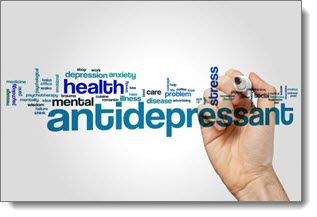 Substance abuse is complex to say the least, and the precursors associated with what leads people down this road have been the subject of debate and controversy for decades on end.
Substance abuse is complex to say the least, and the precursors associated with what leads people down this road have been the subject of debate and controversy for decades on end.
What is widely accepted from a clinical perspective though is that substance abusers are subject to co-occurring disorders while caught up in the throes of the abuse itself – the most common of which is anxiety that stems from multiple causes, such as psychosocial stress, substance withdrawal and distinct DSM-5 anxiety disorders. Also, some substances with abuse potential can actually cause anxiety, so success in managing it is contingent upon the individual’s commitment to minimizing or abstaining from drugs that are causing or exacerbating anxiety in the first place. Here are several viable pharmaceutical options for treating anxiety associated with substance abuse:
Benzodiazepines
Don’t be too quick to rule out benzos in substance abusers. Yes, the risks are potentially high in that the anti-anxiety properties of this drug class can “remind” substance abusers of the euphoric and dissociative effects of their drugs of choice, but most psychiatrists are able to manage such patients by monitoring for dose escalation and refill frequency. The major advantage of the benzos is they work quickly at providing anxiety relief. The benzodiazepines Librium and Valium are FDA-approved for anxiety associated with alcohol withdrawal. Excessive sedation is the primary side effect of the benzos, accompanied by the risk that users with a substance abuse history may come to “like the way it makes them feel” a bit too much.
Dosing
Librium: 15-100mg per day
Valium: 5-40mg per day
 Antidepressants
Antidepressants
Substance abusers with concomitant anxiety will likely find themselves rotating through a selection of SSRIs and SNRIs before settling on what agent works best for them. The SSRI Paxil carries the most FDA-approved indications for anxiety management, but it does tend to cause the most weight gain and sexual dysfunction. Zoloft and Lexapro aren’t as robust in managing anxiety, but they do possess a “cleaner” side effect profile than Paxil and are associated with very few drug-drug interactions. The SNRIs Cymbalta and Fetzima are good choices for the substance-abusing patient with an accompanying chronic pain syndrome and are FDA-approved for these conditions.
Dosing
Paxil: 20-60 mg per day
Zoloft: 50-200 mg per day
Lexapro: 10-20 mg per day
Cymbalta: 40-120 mg per day
Fetzima: 20-120 mg per day
Buspar
Buspar has been available for many years, and I find that most substance abusers are not only aware of it, but have also tried it for managing anxiety with little reported success. It is not a substitute or a replacement for benzodiazepines in that it works very slowly. Its actions for managing anxiety more closely resemble the SSRIs, thus patients expecting the feeling and immediacy of relief afforded by benzos will be very disappointed. Buspar works best by pushing the dose to the daily recommended maximum of 60mg.
This is best done in divided doses of 30mg, two times daily, or 20mg, three times daily. Dizziness and sedation are the most often reported side effects.
Dosing: 30-60 mg per day
Vistaril, Atarax
Many clinicians are unaware that Vistaril and Atarax have actual FDA indications for anxiety. In fact, these agents have been employed for postoperative sedation and anxiety in hospital settings for decades. Both drugs have anxiolytic properties because they’re pharmacologically classified as antihistamines which are typically sedating. Think Benadryl as another apt example. Although quite safe, users frequently encounter classic antihistaminic side effects of dry mouth, blurred vision and constipation – in addition to sedation.
Dosing: Atarax and Vistaril 25-100 mg per day
Lyrica
Lyrica has made its mark primarily because of its efficacy in managing fibromyalgia and various neuropathies. It is a Schedule V controlled substance however, and some users do report having a “Valium-like” experience with this drug, so similar to the benzos, it should be utilized with caution in those with a substance abuse history. In the absence of substance abuse, Lyrica is well established as a treatment for generalized anxiety, rivaling the effectiveness of Ativan and Xanax. Side effects include dizziness, sedation and weight gain.
Dosing: 100-600 mg per day
Neurontin
Neurontin is an antiepileptic and originally used to prevent seizures. However, it morphed into an off-label treatment for anxiety as well as for helping manage withdrawal from alcohol and benzodiazepines. It’s a good choice for substance abuse-related anxiety and even for insomnia associated with generalized anxiety. Common side effects include dizziness and sedation.
Dosing: 300-900 mg per day
Seroquel
Seroquel is but one of many antipsychotics either used or approved for anxiety. Seroquel’s advantage is robust efficacy demonstrated in placebo-controlled clinical trials involving over 2600 hundred patients (large studies) demonstrating that it outperforms Paxil and Lexapro when it comes to easing the symptoms of generalized anxiety. Lower doses of the popular Seroquel XR (in the range of 50-150mg daily) are more effective for anxiety, with the higher end of the dosing spectrum reserved for treating psychotic features. Seroquel has not gained FDA approval for generalized anxiety and probably won’t because it is one of the worst antipsychotics when it comes to weight gain and metabolic complications (type 2 diabetes, elevated cholesterol and lipids).
Dosing: 50-800 mg per day
Herbals
 Although natural medications are rarely backed up by the quantity and quality of controlled trials that we expect from conventional prescription medications, some have a credible history of safe and at least, somewhat effective use. One of these is valerian root, which is purported to help with both anxiety and insomnia. Valerian’s believed mechanism of action is similar to that of the benzodiazepines (enhancing the actions of GABA). It is quite safe, and the only notable adverse effect reported is mild elevation of liver enzymes, which is not only rare, but normalizes upon discontinuation.
Although natural medications are rarely backed up by the quantity and quality of controlled trials that we expect from conventional prescription medications, some have a credible history of safe and at least, somewhat effective use. One of these is valerian root, which is purported to help with both anxiety and insomnia. Valerian’s believed mechanism of action is similar to that of the benzodiazepines (enhancing the actions of GABA). It is quite safe, and the only notable adverse effect reported is mild elevation of liver enzymes, which is not only rare, but normalizes upon discontinuation.
Dosing: 200-450 mg per day
When treating anxiety associated with substance abuse pharmacologically, the most important consideration is the risks vs. benefits of the various medication options. Benzodiazepines, for sure, are riskier than SSRIs or Buspar, but that doesn’t mean they should be automatically ruled out. Each situation should be assessed independently, and it’s likely that patients will have to rotate through several options before finding one that works satisfactorily without complicating or exacerbating the substance abuse issue.
Attribution Statement:
Joe Wegmann is a licensed pharmacist & clinical social worker has presented psychopharmacology seminars to over 10,000 healthcare professionals in 46 states, and maintains an active psychotherapy practice specializing in the treatment of depression and anxiety. He is the author of Psychopharmacology: Straight Talk on Mental Health Medications, published by PESI, Inc.
To learn more about Joe’s programs, visit the Programs section of this website or contribute a question for Joe to answer in a future article: joe@thepharmatherapist.com.